#douglas massey
Explore tagged Tumblr posts
Text










#the old dark house#1932#boris karloff#gloria stuart#charles laughton#ernest thesiger#elspeth dudgeon#brember wills#eva moore#melvyn douglas#lilian bond#raymond massey#horror#comedy#black and white#black and white movies
205 notes
·
View notes
Text

Lisa Massei, 1990
King Douglas
204 notes
·
View notes
Text

The Old Dark House (1932)
#the old dark house#boris karloff#ernest thesiger#charles laughton#gloria stuart#lilian bond#melvyn douglas#raymond massey#eva moore#1932#1930s horror#1930s movies#james whale#odh#universal horror#mystery#comedy#classic horror#vintage movie ads
61 notes
·
View notes
Text
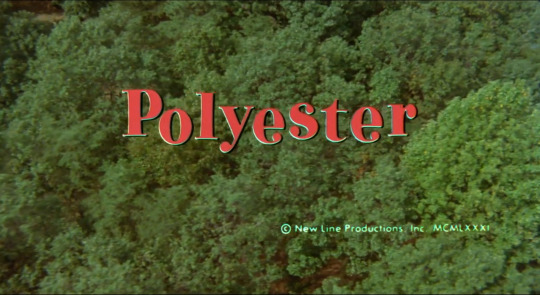

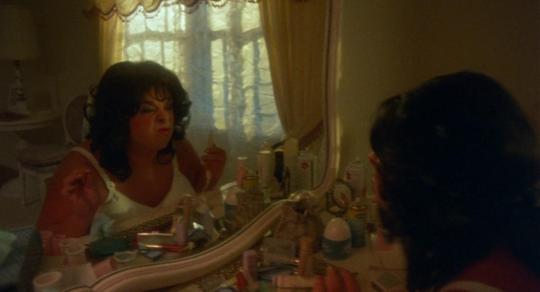





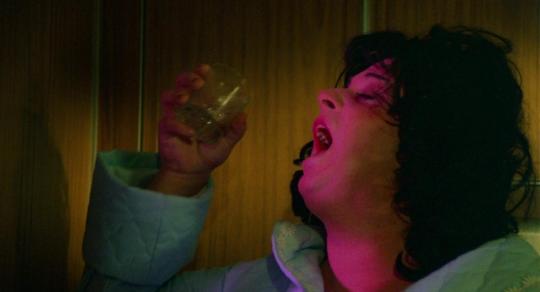
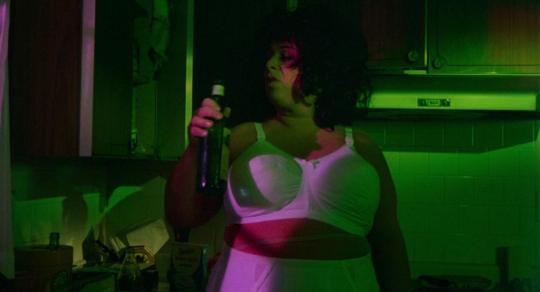


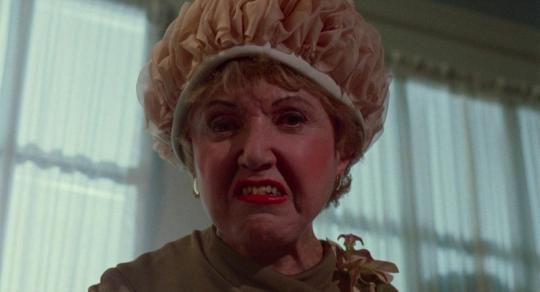
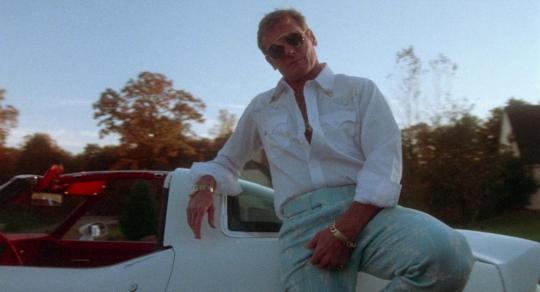







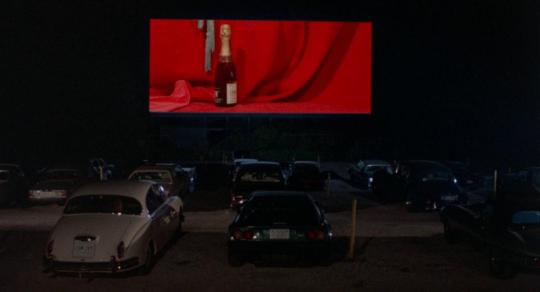


Polyester (1981)
John Waters’ most literal flip of the melodramas of Douglas Sirk is an appealing middle ground between his transgressive earlier works and the more mainstream fare he’d make at the end of the century; one of Divine’s best performances.
Director: John Waters
Cinematographer: David Insley
Starring: Divine, Tab Hunter, Edith Massey, Mink Stole, Cookie Mueller, and Mary Vivian Pearce
#polyester#1981#john waters#divine#tab hunter#melodrama#edith massey#mink stole#cookie mueller#mary vivian pearce#baltimore#80s movies#80s film#80s cinema#cult cinema#cult films#cult classic#cult movies#queer film#lgbt cinema#lgbtq film#queer cinema#douglas sirk
134 notes
·
View notes
Text


I don’t claw railings. That’s more of a Bela move
#The Old Dark House#1932#Boris Karloff#Gloria Stuart#Lilian Bond#Raymond Massey#Charles Laughton#Eva Moore#Melvyn Douglas#Brember Wills
9 notes
·
View notes
Text


Currently Watching
THE OLD DARK HOUSE James Whale USA, 1932
#Raymond Massey#Melvyn Douglas#Charles Laughton#James Whale#watching#The Criterion Channel#1932#Boris Karloff
6 notes
·
View notes
Text

#Mourning Becomes Electra#Rosalind Russell#Michael Redgrave#Raymond Massey#Kirk Douglas#Katina Paxinou#Leo Genn#Nancy Coleman#Henry Hull#Dudley Nichols#1947
1 note
·
View note
Text
Who is Gloria Anzaldúa?: A review of a Revolutionary Women
This is a somewhat academic research essay about Gloria Anzaldúa and her impact on the queer Chicana Identity. If you are unfamiliar with her work and you are a queer Chicana, it's like waking up. A professor once told me that reading Anzaldúa for the first time is like taking the Red pill. It's confronting a part of yourself that society has conditioned you to quiet. If this something doesn't fully resonate with you, that's okay. Read and learn from someone with a different perspective anyway. As Chicano Studies will stress, Connection is fundamental to growth and healing. I am always open to critique and edits. Feel free to DM me with questions/concerns/or even edits. My goal is to build a connection with those within this space!
The day I was assigned Borderlands/La Frontera by Gloria Anzaldúa was my first encounter with the true nature of my cultural heritage. It was my first year at Texas State, 558 miles from El Paso, Texas, the borderland I called home. At that time, my goal was to go to law school, work as an attorney, maybe run for office, and eventually become a Judge; I was to be the Perfect Mexican Daughter. Borderlands was a transformative read. It was the story of the border, my home, and my life. Anzaldúa writes, “1,950-mile-long open wound dividing a pueblo, a culture, running down my body, staking fence rods in my flesh, splits me, splits me, me raja, me raja.” [1]Living on the U.S.-Mexico Border, being Mexican, you grew up with a tear in your soul, the likes of which you were conditioned to ignore. Subsequently, this societal-imposed ignorance breeds resentment, anger, and conformity. It is the pressure to assimilate. It's important to understand that the goal of assimilation is to distance yourself from yourself. This distance, for me at least, was painful.
Reading Anzaldúa for the first time made me realize I had a choice. For me and so many, Anzaldúa served as the bridge between assimilation and decolonization. Meaning she presented a world in which my pain could be transfigured into the reclamation of my identity. Through her philosophical and historical narrative, Anzaldúa gave us a path to reconnecting. Reading Borderlands and discovering my Chicana/Latina and Indigenous roots put me on the path to reconnection; it made the grip that assimilation once had on me gradually loosen. I could breathe, write, and create and connect with my identity. Therefore, this essay aims to provide a context of the historical and social importance of the revolutionary work of Gloria Anzaldúa's work.
Seeing that Anzaldúa primarily writes about the effects of a political border like the US-Mexico border on culture, I believe it is important to understand the historical context of border relations between the United States and Mexico when Anzaldúa was writing. Anzaldúa published most of her works between 1981 and 1996, while her last work would be published after she died in 2015. Therefore, I will primarily focus on the border relations between the U.S. and Mexico in the 80s and 90s. Historian Douglas Massey points out, “Although the Mexico-U.S. border has long been deployed as a symbolic line of defense against foreign threats, its prominence in the American imagination has ebbed and flowed over time. Over the past several decades, however, the political and emotional importance of the border as a symbolic battle line has risen.” [2]Massey points out that the idea of a US-Mexico border as a physical and metaphysical construct that divides is a fairly recent concept. In the 19th and early 20th centuries, U.S., Texas, and Mexico relations were inconsistent fluctuations, leading to an ever-changing physical border. Massey writes, “In theory, the Mexico-U.S. border first came into existence with Mexico's achievement of independence from Spain in 1821, although very quickly the border was blurred by the entry of U.S. settlers into northern Mexico from southern and border states in the United States.” (161) Which leads us into the 20th century. Where the border is now effectively militarized, and there are increasingly anti-immigration sentiments that have been pervasive throughout history and perpetuated through the militarization of the physical US-Mexico border. “A systematic coding of weekly U.S. news magazine covers dealing with immigration from 1970 to 2000 found that negatively framed covers increased markedly in frequency through the 1970s, 1980s, and 1990s. Migration from south of the border was increasingly referred to as a "crisis" and was labeled either a "flood" that would "inundate" the United States and "drown" its society or an "invasion" of hostile "aliens" pitted against "outgunned" Border Patrol agents who sought to "hold the line" against "banzai charges" by migrants who would "overrun" American society.” [3](168) This was the tumultuous time when Anzaldúa became prominent in her academic career. It was important to her that within her works, she addressed the systematic failings that caused this racist climate. In Borderlands/La Frontera, Anzaldúa says: “Those who make it past the checking points of the Border Patrol find themselves in the midst of 150 years of racism in Chicano barrios in the Southwest and in big northern cities (37).” Within the context of the time, simply acknowledging the tyrannical effects of the physical US-Mexican border revolutionized the way Chicanos interacted with border ideology. By highlighting this systemic racism within the physical and metaphysical U.S.- Mexico border, Anzaldúa highlighted the pain that Mexicans Chicanos felt living with the hostility that came from being a borderland person.
Moreover, within the historical context of the 80s and 90s, Anzaldúa faced a great challenge when it came to her queer identity. Within Borderlands, not only does A write about the struggles of a border identity, but she also writes about the struggles of queerness and gender and how that itself is an intersectional identity worth exploring and worth value. It’s important to note that historically being Chicana with a voice, and also being queer was still extremely taboo. “Gay and lesbian lifestyles are taboo, and Chicano culture and are harshly castigated. To violate this fundamental moral standard is to invite ostracism, violence or both.” [4]The inclusion of her queer identity as a form of intersectionality, a form of a borderland, was revolutionary for the time. Not only was she talking about queer identity and gender during a time when it was dangerous, but she used her lesbian identity as a form of intersectionality to demonstrate aspects of her philosophy. “She says that as a queer, she has no culture yet at the same time she has so much. Thus she inhabits Sandoval’s idea of a new kind of social movement that is “differential.” She revolutionized how we view queerness and gender regarding identity, and including this aspect of her identity exemplifies bravery and a revolutionary mindset. Within her work, Borderlands, Anzaldúa outlines the concept of cultural tyranny. Aspects within Latino and Chicano culture that aim to exclude. Within this aspect of her book, she directly addresses the systemic issue of machismo culture. The same machismo culture that when she dares to speak her mind and her truths, they call her a “traitor,” a “sellout. ”She writes: “Not me sold out my people, but they me.” [5]. Not only does she defy cultural expectations, but she’s unafraid to critique the culture and its exclusionary aspects as well.
Given the historical context, Anzaldúa was a revolutionary woman with revolutionary ideas. As a queer Chicana, she shook the modern landscape of Chicana identity by pulling to the forefront the Chicano consciousness of the true narrative of borderland people and by validating and empowering the identity of those that live and in-between those that live in a borderland. She countered racist ideology with a counter-narrative and a call to action for those who live in borderlands for those who live in a borderland to deassimilate to choose to reengage with the intersectionality of their identities. I think Anzaldúa legacy can best be summed up In this quote from Revolutionary women of Texas and Mexico: “In our work, we use exploration leading to cultural identity as a way of seeing self and others, and the basis for this is Anzaldúas framework. Exploration starts us on the road not only to understanding others and their identities but also to looking within to expand our perspectives in articulating our own cultural identity.” [6]
[1] Gloria Anzaldúa, Borderlands La Frontera , 4th ed. (San Francisco, California : aunt lute books, 2007).
[2] Douglas Massey, “The Mexico-U.S. Border in the American Imagination,” Proceedings of the American Philosophical Society 160, no. 2 (June 2016): 160–77, https://www.jstor.org/stable/26159208, 161.
[3] Douglas Massey, “The Mexico-U.S. Border in the American Imagination,” Proceedings of the American Philosophical Society 160, no. 2 (June 2016): 160–77, https://www.jstor.org/stable/26159208, 168.
[4] María Herrera-Sobek, “Gloria Anzaldúa: Place, Race, Language, and Sexuality in the Magic Valley,” PMLA/Publications of the Modern Language Association of America 121, no. 1 (January 2006): 266–71, https://doi.org/10.1632/003081206x129800, 270.
[5] Gloria Anzaldúa, Borderlands La Frontera , 4th ed. (San Francisco, California : aunt lute books, 2007), 47.
[6] 1. Kathy Sosa et al., Revolutionary Women of Texas and Mexico: Portraits of Soldaderas, Saints, and Subversives (San Antonio, TX: Maverick Books, Trinity University Press, 2020), 202.
57 notes
·
View notes
Text
By Struggle-La Lucha Baltimore bureau
Dozens of protesters took to the streets demanding justice for Sonya Massey and all victims of police terror.
After briefly rallying at Douglas Homes public housing project where the Rev. Annie Chambers – a public housing advocate in East Baltimore – addressed the crowd, the group marched to Baltimore’s police headquarters, blocking traffic on East Fayette Street, chanting “justice for Sonia Massey” and “from Baltimore to Palestine, occupation is a crime.”
#Baltimore#protest#Sonya Massey#BlackLivesMatter#solidarity#justice for sonya massey#FreePalestine#killer cops#white supremacy#Struggle La Lucha
10 notes
·
View notes
Text
Old Dark House is such a odd movie to come out of the 30's:A married couple(Raymond Massey and Gloria Stuart ) and their laid back war veteren friend (Later OScar Winner Melvyn Douglas ) end up at an old house occupied by a nervous gay man(Ernest Thesinger ) ,his grumpy heavilly Christain deaf sister,their very old father played by a woman with a fake beard cause they couldnt find a man old enough ,a drunken mute butler(Played by a top billed Boris Karloff despite him not doing much and they have to be like"This is the same guy from Frankenstein ,HES THAT GOOD ),and the gay guy and deaf womans pyromaniac brother they keep in the basement .Then a buisnessman (Charles Laughton ) and a chorus girl show up.ITs a horror film where no one dies(maybe one person but I am legit not sure ),no ghost,just a bunch of weirdos in a weird house.....I love it
@countesspetofi @the-blue-fairie @themousefromfantasyland @theancientvaleofsoulmaking @ariel-seagull-wings @princesssarisa @amalthea9 @piterelizabethdevries
6 notes
·
View notes
Text

Polyester is a 1981 American comedy film directed, produced, and written by John Waters, and starring Divine, Tab Hunter, Edith Massey, and Mink Stole. It satirizes the melodramatic genre of women's pictures, particularly those directed by Douglas Sirk, whose work directly influenced this film. The film is also a satire of suburban life in the early 1980s, involving topics like divorce, abortion, adultery, alcoholism, racial stereotypes, foot fetishism, and the religious right.
Polyester was filmed in Waters' native Baltimore, Maryland, like many of his previous films, and it featured a gimmick called Odorama, whereby moviegoers could smell what they were viewing on-screen with special scratch-and-sniff cards (a stylistic tribute to the work of William Castle, whose films typically featured attention-grabbing gimmicks). [wikipedia]
12 notes
·
View notes
Text
Dread by the Decade: The Old Dark House
👻 You can support me on Ko-fi ❤️
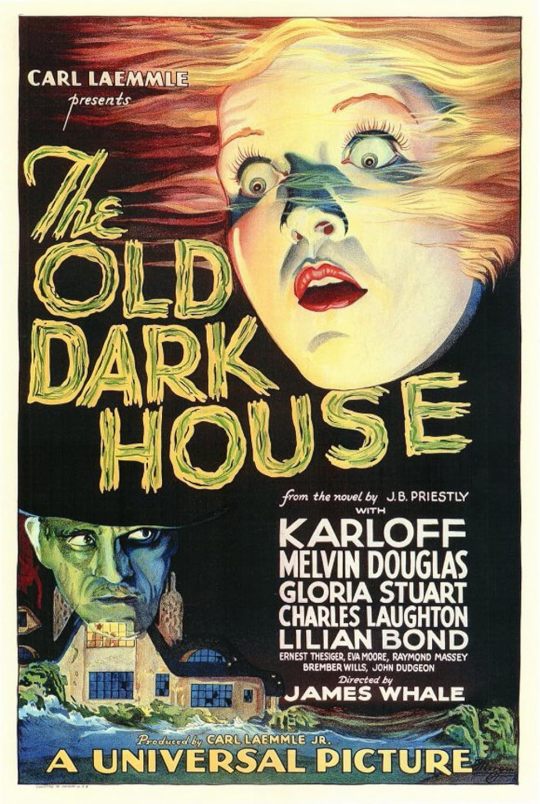
★★★½
Plot: Travelers shelter from a storm in an eccentric family's manor.
Review: A bizarre, silly tale sustained by its charming cast and striking cinematography.
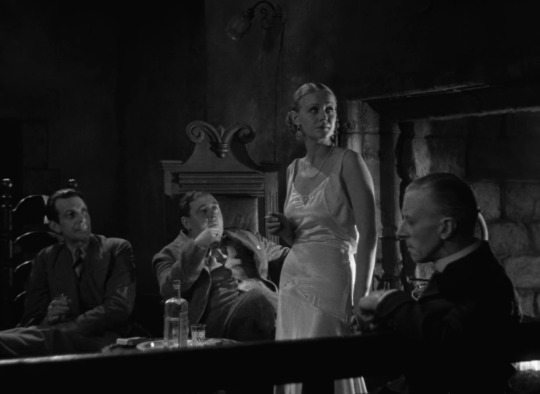
Source Material: Benighted by J. B. Priestley Year: 1932 Genre: Horror Comedy, Gothic Country: United States Language: English Runtime: 1 hour 12 minutes
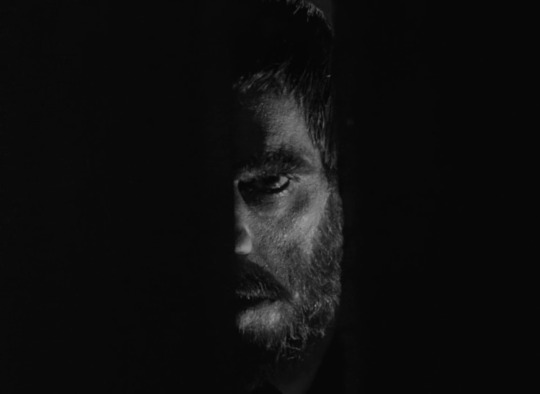
Director: James Whale Writers: Benn W. Levy, R. C. Sherriff Cinematographer: Arthur Edeson Editor: Clarence Kolster Composer: David Broekman Cast: Melvyn Douglas, Raymond Massey, Ernest Thesiger, Gloria Stuart, Charles Laughton, Lilian Bond, Eva Moore, Boris Karloff

------
Story: 3.5/5 - Successfully pokes fun at gothic horror tropes and cliches, but suffers slightly from a rushed ending.
Performances: 4/5 - The cast do a great job playing exaggerated gothic stock characters, from Laughton's campy aristocrat to Eva Moore's overly-ominous lady of the manor.
Cinematography: 4/5 - Excellent framing.
Editing: 4/5
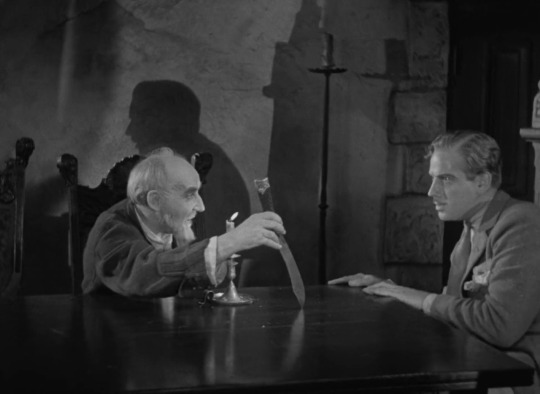
Music: 3.5/5
Effects: 4/5 - The car crash and landslide are a bit silly, but fit the tone of the film.
Sets: 4/5 - Well-dressed sets with eerie hallways and stairwells. A bit disappointing there isn't a wide shot of the manor itself, though.
Costumes, Hair, & Make-Up: 4/5 - Solid. A surprise character towards the end sports interesting make-up.
youtube
Trigger Warnings:
Mild violence
Alcoholism
Domestic abuse (off-screen)
#The Old Dark House (1932)#The Old Dark House#James Whale#American#horror comedy#psychological horror#Dread by the Decade#review#1930s#★★★½
11 notes
·
View notes
Text
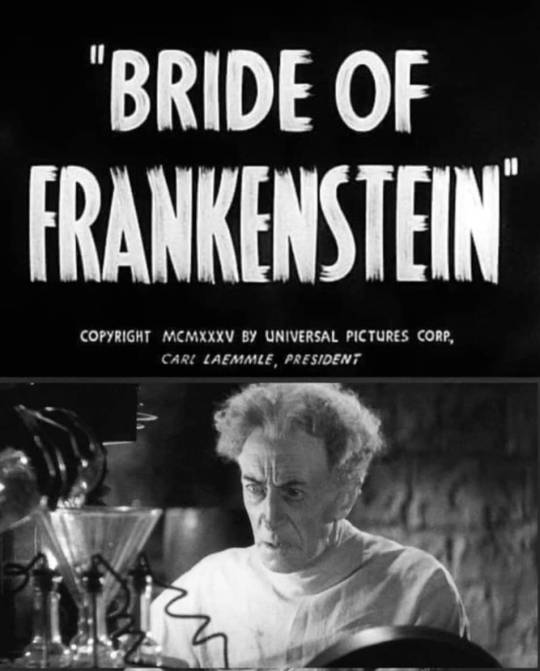
Ernest Thesiger
(15 January 1879 – 14 January 1961) as Dr. Septimus Pretorious.
Thesiger was a British stage and film actor. His early ambition was to be a painter, but after serving and being wounded in World War I, increasingly traveled in literary and theatrical circles. George Bernard Shaw wrote the role of The Dauphine for him in the play “Saint Joan”.
Thesiger made his film debut in 1916, and appeared in several silent films. He befriended director James Whale, who was hired to direct the screen adaptation of J. B. Priestley's novel Benighted as “The Old Dark House” (1932), starring Charles Laughton in his first American film, together with top-billed Boris Karloff, Melvyn Douglas, Gloria Stuart, Raymond Massey and Lillian Bond. Whale immediately cast Thesiger in the film as Horace Femm, launching his Hollywood career. The following year Thesiger appeared (as a Scottish butler) with Karloff in a British film, “The Ghoul”.
When Whale agreed to direct Bride of Frankenstein in 1935, he insisted on casting Thesiger as Dr. Septimus Pretorius, instead of the studio's choice of Claude Rains.
Thesiger made several appearances on Broadway, notably as Jacques to Katharine Hepburn's Rosalind in the longest-running production of “As You Like It” ever produced on Broadway. Later films included “The Horse's Mouth” (1958) with Alec Guinness, “Sons and Lovers” (1960), and “The Roman Spring of Mrs. Stone”, with Vivien Leigh and Warren Beatty (1961). That same year he made his final stage appearance—a mere week before his death—in “The Last Joke” with John Gielgud and Ralph Richardson.
In 1960, Thesiger was appointed a Commander of the Order of the British Empire (CBE). His last film appearance was a small role in “The Roman Spring of Mrs. Stone” (1961). Shortly after completing it, Thesiger died in his sleep from natural causes on the eve of his 82nd birthday. He is buried in Brompton Cemetery in London.
BRIDE OF FRANKENSTEIN opened wider in the United States on 20 April 1935, after premiering 19 April, 1935 in San Francisco and in Seattle.
Universal Pictures. Starring Boris Karloff, Colin Clive, Valerie Hobson, Elsa Lanchester, Ernest Thesiger, E. E. Clive, O.P. Heggie, and Una O’Connor.
Directed by James Whale. Screen story by William Hurlbut and John L. Balderson. Screenplay by William Hurlbut. Inspired by the novel “Frankenstein” by Mary Shelly.
Music by Franz Waxman.
Black and White. 75 minutes.
3 notes
·
View notes
Text

The Old Dark House (1932)
#the old dark house#boris karloff#ernest thesiger#charles laughton#gloria stuart#lilian bond#melvyn douglas#raymond massey#eva moore#1932#1930s horror#1930s movies#james whale#odh#universal horror#mystery#comedy#classic horror#movie posters
60 notes
·
View notes
Photo

Ronald Colman in The Prisoner of Zenda (John Cromwell, 1937)
Cast: Ronald Colman, Madeleine Carroll, C. Aubrey Smith, Raymond Massey, Mary Astor, David Niven, Douglas Fairbanks Jr. Screenplay: John L. Balderston, Edward E. Rose, Wells Root, Donald Ogden Stewart, based on a novel by Anthony Hope. Cinematography: James Wong Howe. Art direction: Lyle R. Wheeler. Film editing: James E. Newcom. Music: Arnold Newman.
The identical cousin is a genetic anomaly known only to Anthony Hope and the creators of The Patty Duke Show, but both got a great deal of mileage out of it. Hope's novel about a man who finds himself posing as a Ruritanian king to fend off a threat to the throne was such a hit that it was immediately adapted for the stage, turned into a film in 1913, and even became a Sigmund Romberg operetta. But leave it to David O. Selznick to produce perhaps the best of all adaptations. It was once said of Selznick -- I forget by whom, but it sounds a lot like something Ben Hecht would say -- that to judge from his movies, he had read nothing past the age of 12. Among the novels he made into movies are David Copperfield (George Cukor, 1935), A Tale of Two Cities (Jack Conway, 1935), Little Lord Fauntleroy (John Cromwell, 1936), and The Adventures of Tom Sawyer (Norman Taurog, 1938). But it has to be said that each of these adaptations remains probably the best screen version of its source. The 1937 Prisoner of Zenda is so good that when MGM decided to remake it in Technicolor in 1952, producer Pandro S. Berman and director Richard Thorpe not only used the 1937 screenplay by John Balderston and Noel Langley, with Donald Ogden Stewart's punched-up dialogue, but also the score by Alfred Newman, following the earlier version almost shot for shot. The chief virtue of Selznick's production lies in its casting: Ronald Colman is suave and dashing as Rudolf Rassendyll and his royal double, Madeleine Carroll makes a radiant Princess Flavia, and Raymond Massey is a saturnine Black Michael. Mary Astor, C. Aubrey Smith, and David Niven steal scenes right and left. Best of all, though, is Douglas Fairbanks Jr. as Rupert von Hentzau, a grinning scamp of a villain. Fairbanks is so good in the role that we cheer when he escapes at the end. How Selznick got this one past the Production Code, which usually insisted on punishing wrongdoers. is a bit of a mystery, but he may have told the censors that he was planning to film Hope's sequel, Rupert of Hentzau, in which Rupert gets what's coming to him. He never got around to the sequel, of course, being distracted by Gone With the Wind (Victor Fleming, 1939).
3 notes
·
View notes
Text

3 notes
·
View notes